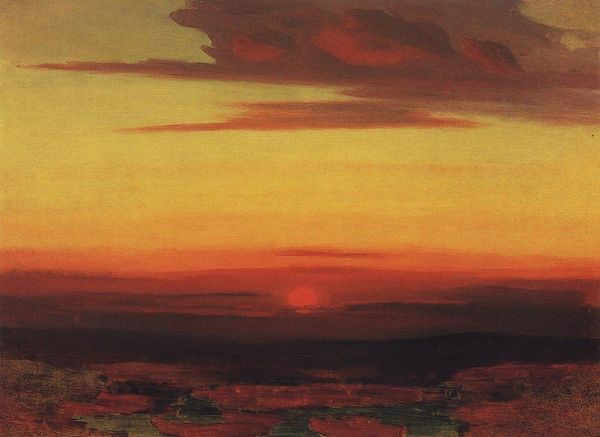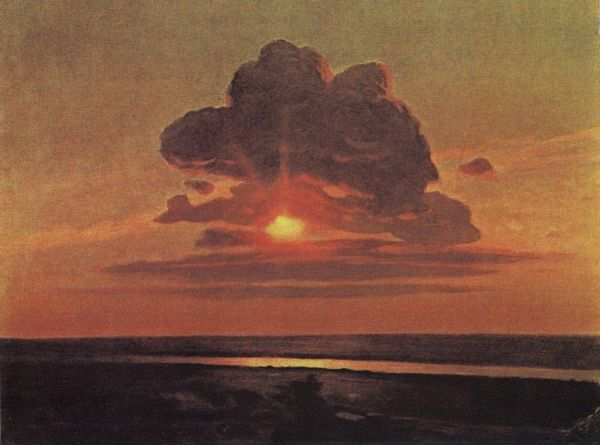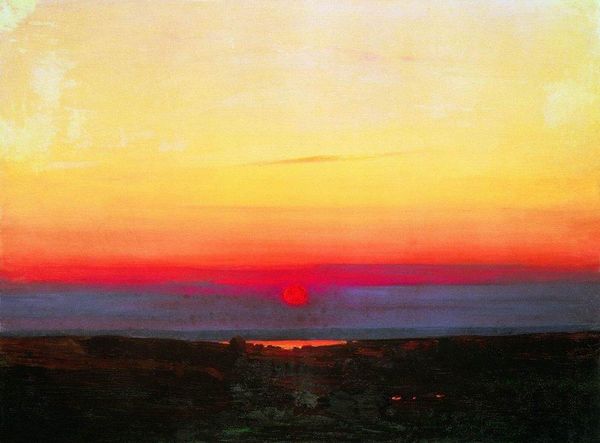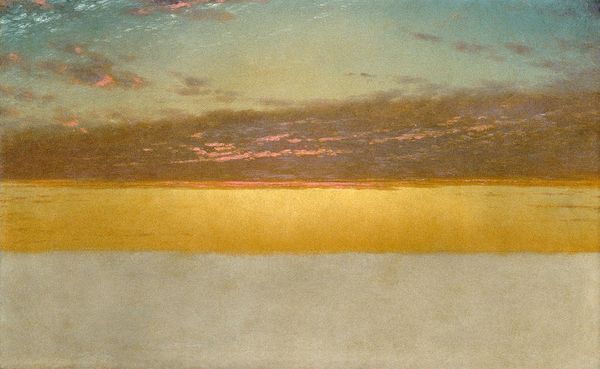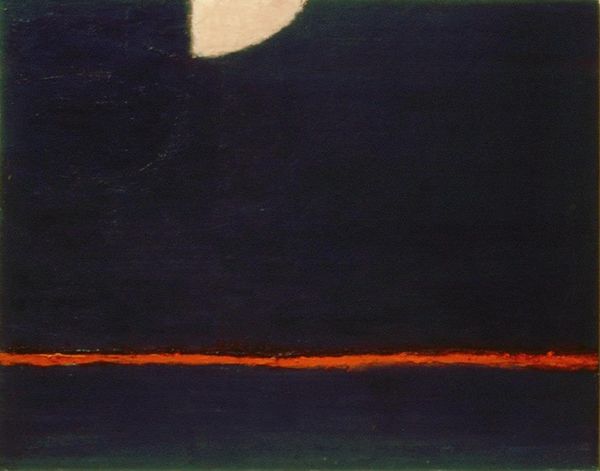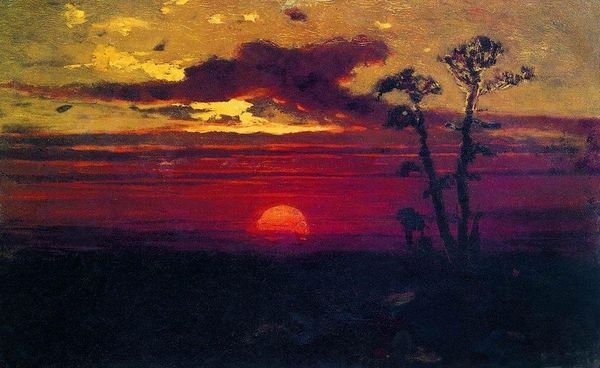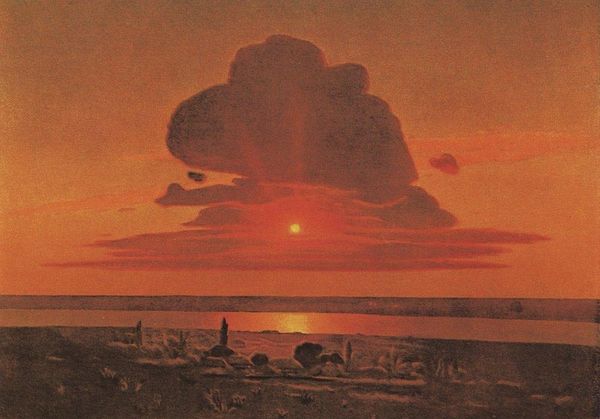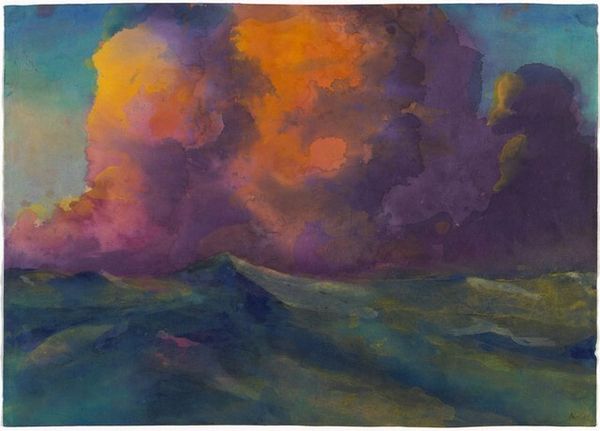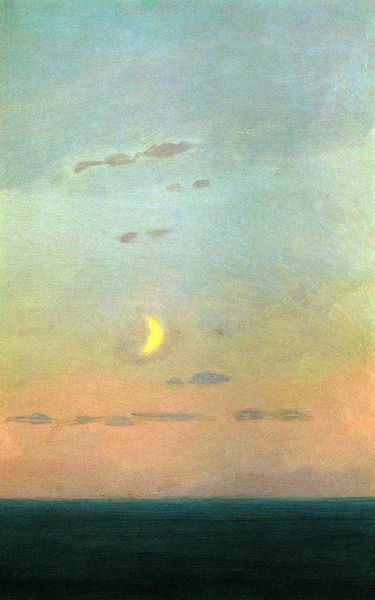
#
abstract expressionism
#
sky
#
abstract painting
#
impressionist landscape
#
possibly oil pastel
#
fluid art
#
neo expressionist
#
acrylic on canvas
#
abstract nature shot
#
cloud
#
abstract art
#
expressionist
#
orange
Copyright: Public domain
Curator: This is “Clouds” by Arkhyp Kuindzhi, painted around 1905. It seems to be an oil painting. What do you make of it? Editor: Immediately, I'm struck by how brooding and intense the colours are. The oranges bleeding into those bruised purples, it feels heavy, weighted, as though the sky is pressing down. Curator: Yes, Kuindzhi was quite the master of light and shadow, wasn’t he? There’s almost a theatricality to the way the clouds are illuminated against that dark background. It’s less about representation and more about the drama of nature itself. Editor: Absolutely, the drama is palpable. It almost feels like a historical painting capturing some great turmoil, a reckoning even. It is compelling because the artist has abstracted a natural event and rendered it as if a comment on the tumultuous historical moments happening around the time it was painted. Russia in 1905, amidst revolution... Curator: The man was fascinated by effects of light; almost obsessed, some might say. It does draw one’s attention. And while Kuindzhi was celebrated, he withdrew from public exhibitions later in his life, supposedly feeling misunderstood. What do you make of that? Editor: Perhaps a resistance against co-option? His rendering of nature skirts a certain kind of sublime terror. To make visible the coming storm has always been the task of artists who are tuned into the murmurs of change, those sensitive to the social barometers around them. The use of something so simple as clouds, and turning it into a reflection of that makes me wonder what he thinks about climate disaster and weather manipulation? What can we learn from an image like this as the storm rages again? Curator: Fascinating, it is all speculation really, which I suppose only deepens the mystery of the painting. His art was really about emotion—capturing the awe and the quiet violence inherent in nature. The way it could stir our souls, I suppose. Editor: Well, that’s a reminder that landscape is never just landscape. It’s always entangled with our histories, our fears, and our hopes. It certainly gives pause for thought and a recognition that we've seen this painting before, somewhere. Curator: Yes. It lingers doesn’t it? Thank you for that insightful analysis. I think it allows for a better understanding and an honoring of the creative energy poured into it, despite time.
Comments
No comments
Be the first to comment and join the conversation on the ultimate creative platform.
